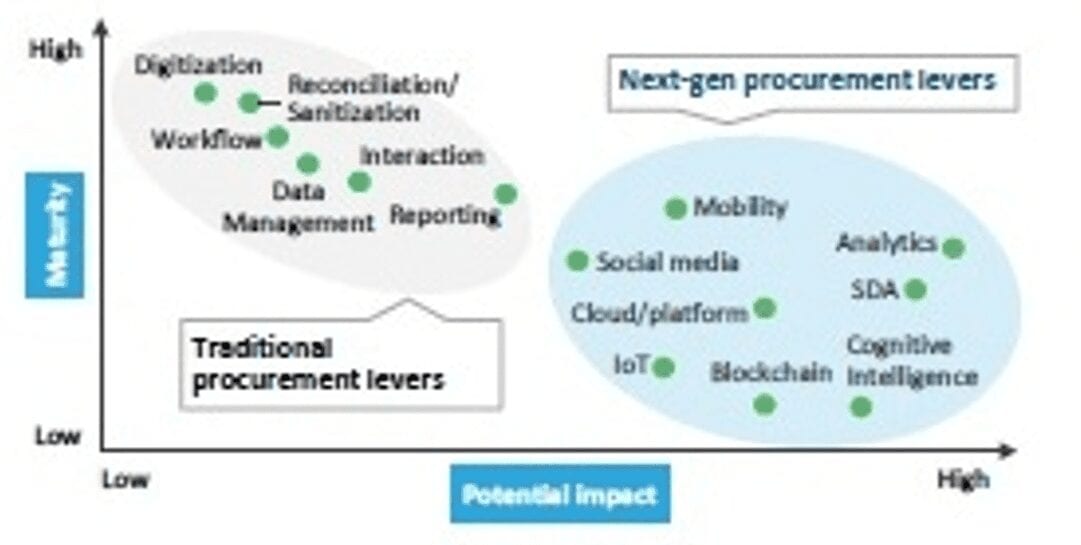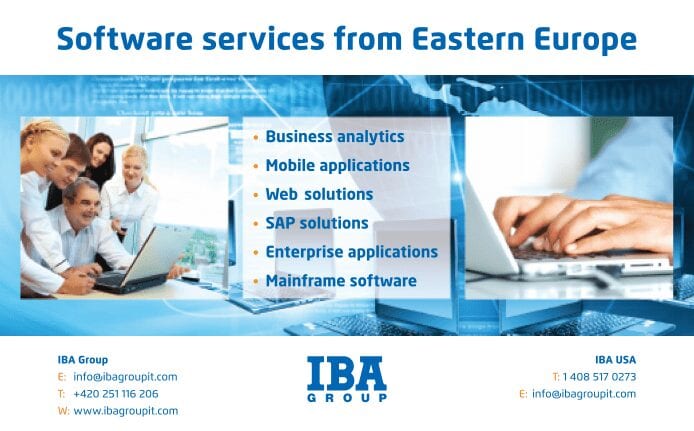
Knowledge Center
Arbitrage-first Procurement is (or should be) Dead…Long Live Digital Procurement: How Using Technology in Buying Decisions Can Add Greater Value
By: Katrina Menzigian, Vice President, Everest Group
Reducing spend with third-party suppliers. Driving down the cost of procurement. Managing supply-led risk. Harnessing true innovation from the supply base. These are the key challenges chief procurement officers (CPOs) have faced for the past five to 10 years. While most CPOs have tackled these decade-old obstacles with tried-and-true methods – there are new, better ways that deliver greater value.
In most cases, they’ve used an arbitrage-first approach to address these issues. They’ve focused on reducing manpower requirements, achieving efficiency by streamlining processes, SLA reporting, and achieving savings by reducing spend, cost of operations, labor arbitrage and spend visibility.
However, this strong emphasis on cost savings reinforces procurement’s designation as little more than an operative, administrative cost center. And it counters enterprises’ expectations of today’s procurement organization as a strategic partner with the capabilities to enable and support business outcomes through various types of value including:
- Improvements to the bottom line
- Operational excellence through supplier innovation and market intelligence
- Reduced total cost of ownership through productivity improvements and minimized tail-end spend
- Enhanced business metrics
Digital-first Procurement to Generate Value
A digital-first, or technology-enabled, procurement model allows CPOs to meet these new expectations. The model centers around three key pillars. First, a focus on more strategic, differentiating activities. Second, a smaller decision-making team augmented by advanced technologies like cognitive computing and advanced analytics.
And third, although cost savings will continue to be part of the value delivered by procurement organizations, they will also be measured and rewarded on their contribution to a variety of business results the larger enterprise is trying to achieve, such as higher earnings per share, faster time-to-market, and improved supplier innovation.
In a digital-first model, the traditional levers procurement pulled to generate value – such as digitization, reconciliation and reporting – are replaced by next-generation levers like mobility, social media, robotics, and analytics.


Let’s take a look at the considerable value these technologies can deliver.
- Mobility empowers the procurement team to analyze insights on the go, resulting in significant process efficiencies. And mobile procurement enables real-time access to data and information, which is essential for quick business decisions.
- Social media can help procurement practitioners share information and build stronger relationships with suppliers. It also accelerates informed business decisions, as news regarding suppliers, innovations, product recalls and supply chain disruptions is often easier to find and more accessible on social media networks than through other channels.
- Analytics can boost procurement’s credibility as a strategic partner by providing predictive insights and actionable recommendations that can play a part in improving business strategy and decision making. Financial and operational data can be combined with relevant external information such as social media, demographics, and big data to identify hidden trends and insights that can prove crucial in procurement decisions. When done well, analytics enables organizations to address critical business questions with unprecedented speed and accuracy. And decisions can be made with greater confidence and less risk, as they’re made based on data, rather than hunches or gut feelings.
- Cloud computing can deliver benefits ranging from cost savings – which is still an important procurement deliverable – to greater flexibility and performance. It allows consolidation of disparate systems onto a single platform to create a single end-to-end view through a flexible and pay-per-use model. And because upgrades and maintenance are simplified, procurement can focus on its core and strategic tasks.
- Internet of Things (IoT) can help procurement shine through its ability to collect, analyze, and use the vast amount of available information. For example, IoT can enable an increase in spend visibility, and a better understanding of supply and equipment usage. And it can help the procurement team improve catalog content and spend management by knowing exactly what is being used and what is needed, in turn improving budget and contract management.
- Cognitive computing can understand all types of data, find patterns, and develop recommendations to augment human judgment. And the more procurement uses it, the smarter it becomes over time. Cognitive systems unlock the power of unstructured data – think industry reports, investment advisory reports and financial news – using deep text and imagine and video analysis.
- Artificial intelligence (AI), when used in conjunction with rules-based automation tools like robotic process automation (RPA), can provide self-learning properties and empower the tools to synthesize unstructured data and pick only relevant information to further improve efficiency.
- Blockchain has the potential to remove rigidness from procurement processes using its simple architecture. Its open distributed ledger can make the entire process more reliable, transparent, and risk-free. And Blockchain-enabled contracts can significantly improve operational efficiency through decreased time to delivery and reduced payment cycles.
Real-World Examples
Forward-thinking procurement organizations are already using these technologies to generate the strategic business value their enterprises expect. For example, the primarily manual payment component of a global telecom operator’s procure-to-pay process took an exceedingly long time and was highly error-prone. By implementing five RPA bots, it reduced average handling time by 60 percent and reduced errors by 75 percent.
And with a natural language processing-based cognitive buying chat bot, a cloud-enabled e-sourcing solution, and supplier analytics, a global company achieved greater process visibility, enhanced supplier performance tracking, improved supplier performance, and reduced supplier queries by more than 20 percent.
MAKING IT REAL IN YOUR PROCUREMENT ORGANIZATION
Of course, none of these technologies is a panacea in and of themselves. To become a next-generation business partner, you need to make fundamental shifts in the way your procurement organization operates.
Here are the five key areas you’ll need to address in order for these new-age tools to help you gain a seat at the strategy table.
- A Different way of Doing Things: How your procurement team is perceived and operates, both internally and externally, will need a fresh approach. Procurement has to change its perception as a cost reduction center that beats suppliers down to the lowest cost to a strategic entity that achieves business outcomes through stronger partnerships. You’ll need to redefine how your team collaborates with other departments within the enterprise to pool cross-functional capabilities and achieve shared objectives. As this journey will require changes within procurement as well as the broader company, effective change management will be critical.
- A New Talent Model: As more and more processes become automated and the focus moves from tactical to strategic, you must transform your talent model from the typical, bottom-heavy pyramid shape, where the majority of the resources are “doers” that perform transactions, to a more middle-heavy model, where resources are capable of identifying data trends and making informed recommendations. In this new digital-first model, you need to attract and retain talent that can not only uncover patterns buried deep within data, but also possess the soft skills necessary to motivate, mobilize, and guide collaboration across the entire enterprise, further driving functional integration. These resources will have to quickly master new technology, negotiate, communicate, and make sound strategic judgments – and finding them will not be easy. You’ll have to invest in recruiting, training and technology.
- A Different Delivery Location Strategy: With the arbitrage first model, the location decision was largely centered around low cost and high capacity. But with automation taking the place of headcount and a growing need for resources with analytical abilities, you may need to shift your delivery location strategy to be able to find and attract employees with the required skills and expertise.
- A Closed Loop Process: Many procurement organizations – perhaps even yours – are still struggling to master the basics: spend visibility, sourcing and contract compliance. Establishing closed-loop procurement is a major achievement and an end goal in and of itself for most procurement organizations. To actualize this strategy, you’ll need to optimize the basic infrastructure for procurement from source to pay in processes, organization and supporting IT systems.
- A Business Outcomes Focus: Lastly, you’ll need to transition away from measuring outputs. Getting caught in cost-cutting cycles as a way to improve measurements is a short-term solution that can hurt your business, rather than give you a competitive advantage. Because of this, your initiatives should be measured by business outcomes – think increased speed-to-market, revenue generation and supplier innovation – and end-customer needs, centered on extensive analytics-based insights and industry expertise.
The benefits of tech-enabled procurement are clear, but the journey to get there can be full of twists and turns. But the consequences of being left behind are significant and they’ll be here sooner than you might expect. The critical question to ask yourself is: Will your procurement group be a leader or laggard in shaping the technology, talent, process and operational changes needed to support your enterprise’s competitive position?

About the Author: Katrina Menzigian, Vice President, Everest Group, leads the firm’s research practices on Customer Experience Management Services (CXM) and Contact Center Outsourcing (CCO), Finance and Accounting Outsourcing (FAO), and Procurement Outsourcing (PO) services. She also is a frequent participant and presenter at industry forums, webinars and client sessions. Menzigian has 20 years of experience in conducting market research, developing competitive intelligence, and advising service providers and buyers on a wide range of outsourcing, offshoring and BPS issues.





